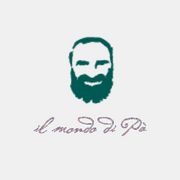Monferrato Munfrà in Piedmontese, is a historical-geographical region of Piedmont.e.
Its territory, almost exclusively of a hilly nature, is mainly included within the provinces of Alessandria and Asti and extends southwards starting from the hydrographic right of the Po until reaching the foot of the Ligurian Apennines
On 1 June 2006 the candidacy dossier was officially presented in Paris to include the territory of Monferrato, in the UNESCO World Heritage List. On 22 June 2014, during the 38th session of the UNESCO committee in Doha, it was officially included, together with Langhe and Roero, in the list of World Heritage sites.
There are various interpretations and hypotheses on the etymology of the word "Monferrato", but none are certain to date. Absolutely implausible: the one supported by Aldo di Ricaldone that would make it derive from "Monte" and "farro", a variety of wheat; another according to which it derives from the Latin "Mons ferax", meaning fertile and rich mountain; still another would refer to the irons left by the Romans in their conquest, hence "Mons ferratus". Finally an interpretation, which is the most suggestive but unlikely one, would derive from a legend according to which Aleramo, wanting to shoe a horse and not finding the right materials, used a brick "mun" in Monferrino and so the horse was shod "frà" : hence the name Monferrato. More recently, Aldo Settia has proposed a new interpretation of the toponym, which could derive, similarly to the numerous similar toponyms widespread between Piedmont and Western Lombardy, from the presence of a type of land called "ferrétto".".
The lower Monferrato or Casalese: is characterized by its soft hills which, with the exception of the Sacro Monte di Crea 455 m, never reach heights higher than 400 meters; territorially it includes the part of the province of Alessandria consisting of the villages that gravitate around Casale Monferrato, one of the historical capitals of this territory. It is bordered to the north and east by the Po and Tanaro rivers. The territory represents a mixture between the hilly landscape and the plain which are characterized, respectively, by the wine and rice cultivation. There are numerous castles as well as characteristic villages often marked by the typical "Pietra da Cantone" of which they are made.iti.
In the lower Monferrato the typical dialect is Piedmontese. There are similarities with the Lombard language of Lomellina and Pavese, exclusively in the centers near the border with Lombardy.
Monferrato is one of the most famous Italian wine regions in the world, especially as regards red wines and sparkling wines
The dry continental climate with hot summers tending to drought and particularly cold winters and the particular hydrogeological conformation of the land are favorable to viticulture, which is dominant throughout the territory, making wine not only an element of economic wealth of the entire region, but also and above all a true symbol of Monferrato culture and tradition. The widespread diffusion of indigenous vines and consequently of a multiple variety of wines are witnesses of this.
Bibliography
- Carlo Ferraris - Roberto Maestri, "History of Monferrato. The origins, the Marquisate, the Duchy", Publisher Cultural Circle The Marquises of Monferrato, Alessandria 2016, ISBN 978-88-97103-01-1
- G.Aldo di Ricaldone, Annals of Monferrato L.Fornaca publisher
- G.Aldo di Ricaldone, Monferrato between Po and Tanaro Gribaudo Lorenzo Fornaca publisher Asti 1999
- R. Grigliè, Invitation to Monferrato, Andrea Viglongo & amp; C. Publishers, 1976
- Hull, Dr Geoffrey 19822) The Linguistic Unity of Northern Italy and Rhaetia, PhD thesis, University of Western Sydney, MacArthur; 37.1..
- M Girotto - ML Ronco 2012, Knowing Monferrato, Publicom publisher, 13100 Vercellili
